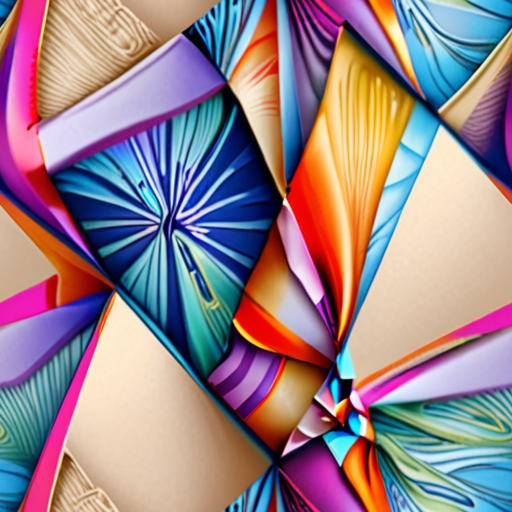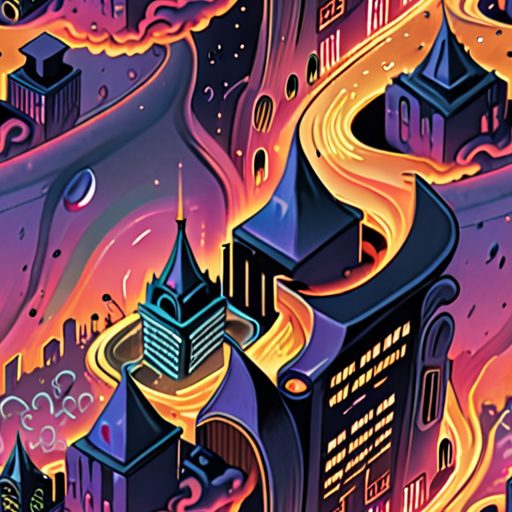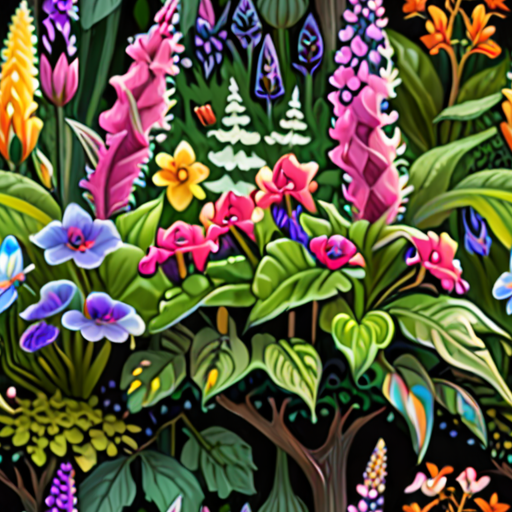“`html
In a world where aesthetics play a crucial role in capturing attention, choosing the right color palette can elevate your projects from mundane to mesmerizing, whether it’s for your home, website, or wardrobe. Discovering the perfect color palette involves more than just selecting a few colors you like; it’s about creating a harmonious blend that resonates with your brand identity or personal style. This article will guide you through the art of building your ideal color palette, starting with how to identify your unique color scheme using online tools. We will explore the practical 60/30/10 rule, ensuring a balanced and visually appealing result across different platforms. Delving into the seven basic color palettes, learn the fundamental principles that can help you create stunning and unique combinations. Additionally, we’ll unravel the secrets behind a successful color palette with the color palette rule, helping you craft a cohesive and striking visual identity for your business. Whether you’re seeking inspiration for modern living room designs, nuanced bedroom color combinations, or the perfect web color themes, this article is packed with trendy ideas, expert tips, and practical advice to inspire you, all while optimizing your color choices for the latest trends and effective branding. From utilizing sophisticated color palette generators to understanding the psychology behind color combinations for clothing and interiors, unlock endless possibilities for your creative projects.
“`
Figuring Out Your Color Palette
To determine your seasonal color palette, start by examining your skin undertones, which can be influenced by your eye color.
- Gray, blue, and green eyes typically have cool undertones, while hazel, amber, and brown eyes tend to have warm undertones.
- Consider your hair color and natural lip color as well, as these can also give clues about your undertones.
- For example, if you have ash-blonde hair and pale lips, you may have cool undertones.
Once you’ve determined your undertones, look for colors that complement them. Cool undertones look best in blues, browns, olives, and purples, while warm undertones suit earthy tones like greens, yellows, and oranges.
- Winter types, who often have cool undertones, can pull off bold and bright colors like emerald green and sapphire blue.
- Summer types, who typically have cool undertones, can wear soft pastels like lavender and powder pink.
- Spring types, who usually have warm undertones, can rock vibrant colors like coral and sunshine yellow.
- Autumn types, who often have warm undertones, can wear rich jewel tones like ruby red and olive green.
Remember, these are general guidelines, and the most important thing is to wear what makes you feel confident and comfortable.
At Home Ideas Finders , we believe that understanding your color palette is just the beginning of creating a personalized style that reflects your unique personality and aesthetic.
By incorporating colors that complement your undertones into your wardrobe and decor, you can create a cohesive and harmonious look that makes you feel like the best version of yourself.
So why not take the first step today and discover your seasonal color palette?
With our expert advice and guidance, you’ll be well on your way to creating a stylish and sophisticated look that turns heads and inspires confidence.
And don’t forget to check out our color palette generator tool, which can help you determine your ideal color combinations based on your skin tone, hair color, and personal preferences.
Happy styling!
The 603010 Rule: A Guide to Balancing Colors in Your Home
I’m excited to share with you my knowledge of the 603010 rule, a simple yet effective way to choose a harmonious color scheme for your home.
- This decorating rule suggests covering 60% of a dominant color, 30% of a secondary color, and 10% of an accent shade in your room.
- The idea behind this rule is to strike a balance between different hues and create a visually appealing atmosphere.
- By applying the 603010 rule, you can easily create a cohesive look that reflects your personal style and complements your furniture and decor.
Why the 603010 Rule Works
The 603010 rule is based on the principles of color theory, which states that different colors evoke emotions and moods.
- When you dominate a room with a single color, it creates a sense of calmness and serenity.
- The secondary color adds a touch of contrast and visual interest, drawing attention to specific features or furniture pieces.
- The accent color injects energy and playfulness, adding a pop of personality to the space.
Applying the 603010 Rule in Practice
To apply the 603010 rule, start by selecting a dominant color that reflects your personal taste and style.
- Choose a secondary color that complements the dominant hue and adds contrast to the space.
- Select an accent color that adds a touch of whimsy and personality to the room.
- Remember to balance these colors according to the 603010 ratio to create a harmonious and visually appealing atmosphere.
Tips for Implementing the 603010 Rule
Here are some additional tips to keep in mind when implementing the 603010 rule:
- Consider the mood and atmosphere you want to create in your home.
- Think about the colors that reflect your personal style and preferences.
- Don’t be afraid to experiment and adjust the color ratios until you find the perfect balance.

Choosing a Good Color Palette
When selecting a color palette for your home or design project, there are several factors to consider.
-
Personal Preferences
Your personal preferences play a significant role in choosing a color palette. Consider the colors you love, the style you’re aiming for, and the mood you want to create.
-
Color Harmony
Color harmony refers to the way colors work together to create a visually appealing effect. There are several principles of color harmony, including:
-
Monochromatic
Using different shades of the same color to create a cohesive look.
-
Complementary
Pairing colors that are opposite each other on the color wheel to create contrast.
-
Analogous
Using colors that are next to each other on the color wheel to create a smooth transition.
-
-
Color Psychology
Colors can evoke emotions and influence our behavior. Consider the psychological impact of different colors on your audience or users.
-
Cool Colors
Blue, green, and purple can create a calming atmosphere and promote relaxation.
-
Warm Colors
Red, orange, and yellow can stimulate energy and excitement.
-
-
Brand Identity
If you’re designing for a brand, consider their existing color scheme and how you can incorporate it into your design.
-
Consistency
Using consistent branding elements helps establish recognition and trust.
-
Flexibility
Adapting the brand’s color scheme to fit different contexts and mediums.
-
-
Contextual Considerations
Consider the environment and purpose of your design. For example:
-
Outdoor Spaces
Choose colors that withstand sunlight and weather conditions.
-
Interior Design
Consider the lighting, furniture, and decor when selecting a color palette.
-
By considering these factors, you’ll be able to select a color palette that effectively communicates your message and resonates with your target audience.

The 7 Basic Color Palettes
We’ve compiled a list of the most popular and timeless color palettes that have been widely used in various design fields.
-
Monochromatic
A monochromatic color scheme features different shades of a single color, ranging from light to dark tones. This palette creates a cohesive look and can be used in various design applications, including interior design, graphic design, and fashion.
-
Complementary
A complementary color scheme pairs two colors that are opposite each other on the color wheel. This palette creates high contrast and visual interest, making it ideal for designs that require attention-grabbing visuals.
-
Analogous
An analogous color scheme features three colors that are next to each other on the color wheel. This palette creates a harmonious and soothing atmosphere, making it suitable for designs that require a calming effect.
-
Split-Complementary
A split-complementary color scheme pairs a color with the two colors on either side of its complementary color. This palette creates a balanced and visually appealing design, making it ideal for logos, branding, and packaging.
-
Tetradic
A tetradic color scheme features four colors that are equally spaced from each other on the color wheel. This palette creates a dynamic and energetic atmosphere, making it suitable for designs that require excitement and playfulness.
-
Triadic
A triadic color scheme features three colors that are equally spaced from each other on the color wheel. This palette creates a bold and vibrant atmosphere, making it ideal for designs that require creativity and originality.
-
Neutral
A neutral color scheme features a combination of black, white, and gray, along with a dominant color. This palette creates a clean and sophisticated look, making it suitable for designs that require elegance and refinement.
The Color Palette Rule
The color palette rule is a fundamental principle in interior design that helps create visually appealing and balanced color schemes.
- Understanding the 60-30-10 Rule
- Benefits of the Color Palette Rule
- Applying the Color Palette Rule
- Example Color Combinations
- Tips for Implementing the Color Palette Rule
The 60-30-10 rule suggests that 60% of a room should be dominated by a primary color, 30% by a secondary color, and 10% by an accent color.
This rule prevents color overload and ensures that each color has enough presence to contribute to the overall aesthetic of the space.
To apply this rule effectively, consider the mood and atmosphere you want to create in the room, as well as the colors that complement each other.
For example, a soothing blue can dominate 60% of the room, while a lighter blue or green can take up 30%, and a bold yellow or orange can add a pop of color at 10%.
Remember to balance warm and cool colors, and don’t be afraid to experiment with different combinations to find what works best for your space.
By understanding and applying the color palette rule, you can create harmonious and visually appealing color schemes that enhance the beauty of your home.

What 7 Colors Go Well Together?
We’ve all been there – standing in front of a paint swatch wall, trying to decide which colors complement each other best.
- Blue and Orange
- Green and Yellow
- Red and Purple
- Teal and Coral
- Gray and Turquoise
- Brown and Mint
- Pink and Gold
This bold combination may seem unusual, but trust us, it works beautifully. Blue represents calmness and serenity, while orange embodies energy and excitement. Pairing these two colors creates a striking contrast that adds visual interest to any space.
For a harmonious and uplifting atmosphere, consider combining green and yellow. These earthy tones bring a sense of balance and stability, making them perfect for a bedroom or living room.
Rich and luxurious, red and purple create a sophisticated palette that exudes elegance and refinement. Use these colors to add drama and glamour to a dining room or study.
For a refreshing and playful look, try pairing teal and coral. These vibrant hues evoke feelings of joy and vitality, making them ideal for a kids’ room or play area.
Neutral gray provides the perfect backdrop for the bright, cheerful turquoise. This calming combination is perfect for a bathroom or kitchen.
Earthy brown and soft mint create a soothing and natural palette that brings warmth and coziness to any space.
For a glamorous and feminine touch, combine pink and gold. These luxurious colors add a touch of sophistication and whimsy to a nursery or dressing room.
Why These Color Combinations Work:
The key to successful color pairing lies in understanding the emotional associations and psychological effects of each hue. By balancing contrasting colors, you can create visually appealing and harmonious spaces that reflect your personality and style.
Conclusion:
Remember, the world of color is vast and exciting, and there’s no one-size-fits-all approach to choosing the perfect palette. Experiment with different combinations, trust your instincts, and have fun exploring the endless possibilities of color!

0 Comments